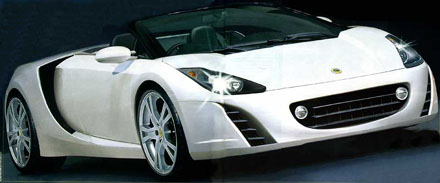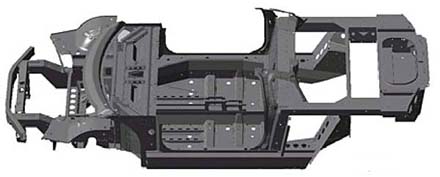
Previous Information and Renderings
25th August 2010: An Internal Lotus document has been leaked from Lotus showing a prototype of the new Esprit. It shares the design dna of the Evora head lights and some styling cues from the renderings below. The Esprit is due to be unveiled at the Paris Motor Show in late September 2010.
Below is a mockup of the previous design for the Lotus Esprit, under Mike Kimberley's leadershop of Lotus.
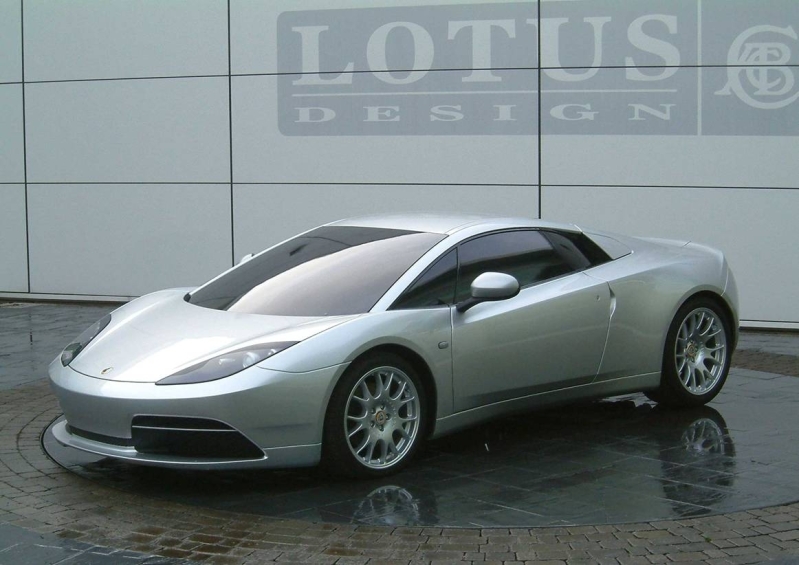
24 October 2009: Reports in the motoring press indicate the launch date of the Esprit has moved back to 2012, due to the introduction of the new Lotus Evora . This is disappointing news and will be a blow to Esprit fans, who were expecting to see it's launch in late 2009. Lotus have said the Esprit's production will be dependant on the success of the Evora.
The sketches on this page are from various car magazines and are an indication of what the car might look like, however Lotus Insiders have confirmed that the images are not an accurate representation. The large side air intakes shown on these rendering are not on the final design (as they would increase drag) and Lotus is keeping the design of the new Lotus Esprit quite seperate from the Elise. The new Lotus Esprit is to cost around £75,000 and Lotus has confirmed the car will be made in England, at the Hethel factory. The car will use a similar Aluminium bonded chassis technology to the Elise, but the car's platform will not be model specific, so it can be used for various Lotus models. This they have call VVA (Variable Vehicle Architecture). The powerplant is strongly rumoured to be the new BMW 4.4 twin-turbo V8, which is being tested in the Esprit mule, seen in Autocar magazine. Although Lotus haven't offically confirmed the name of the car yet, Micheal Kimberley has hinted that the car will be called the Esprit.
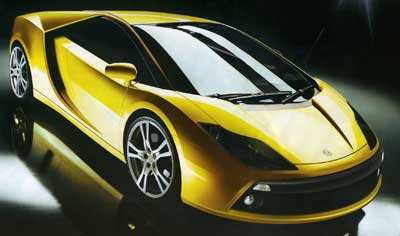
A CAR rendering
The car was originally due for sale in 2007, however, when Mike Kimberley took over Lotus as Chief Executive in 2006, he halted production of the Esprit, ordering new styling and engineering changes. He said "In my view, it wasn't a proper Lotus." The VVA platform will allow for a convertible version, which will increase market appeal and sales. Autocar Magazine predicted that the construction method will be so different and the level of design sophistication so much greater than the older Esprit, that the two would have little in common. Also the V8 engine will most like come from BMW.
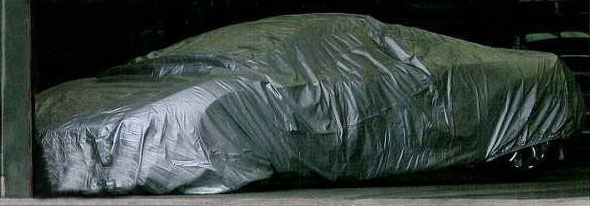
The New Lotus Esprit under covers at the Lotus Factory at Hethel. Picture Courtesy of Autocar
The New Lotus Esprit was photographed undercovers at the Lotus Factory at Hethel, during the 40th Anniversary open day on the 9th September 2007. You can clearly see the wedge shaped profile and the mid engined layout.
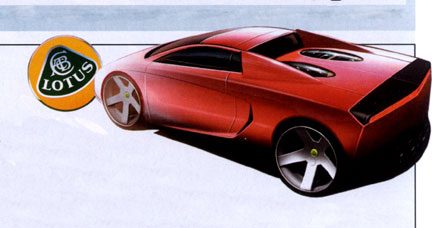
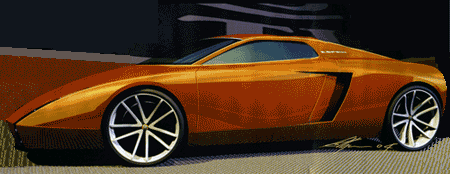
Lotus rendering of the new Esprit

Lotus Esprit Rendering
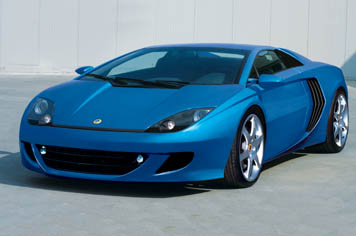
An Autocar Magazine rendering
A glimpse at the new Esprit structure
In November 2006, Lotus released a Newsletter showing the new Lotus Esprit Chassis. In the Newsletter Lotus explained some of the technical background to the design of the chassis. Extracts from the article are show bellow:
A VVA Chassis for the Esprit replacement and other future Lotus Cars
In 2004, Lotus Cars wished to embark on a replacement for the Esprit. Much of the learning, know-how and solution from VVA (Variable Vehicle Architecture) was well suited to this new challenge. However, a fundamental shift was that the volume requirements were greatly reduced. Certain technologies such as the high investment HPDCs of VVA were not viable for the lower-volume requirements. The result was an evolution of the VVA approach to develop a new sports car focused structure that should be morphable to cater for future Lotus and client requirements at volumes of up to 5,000 per year and the first variant would be the Esprit replacement.
Immediate attention was given to the critical footwell area, and a design which showed a great improvement over Elise was conceived, where the siderail was slimmed down beside the feet but then it was supplemented beside the occupant to increase the member size in the area critical for vehicle stiffness. This supplementation also offered a load path for the wheel and tyre during frontal impact. The final embodiment of the design is shown. At the front, there is a separate subframe. This is to enable its replacement in the event of accident damage when suffering a frontal impact or when the suspension mounting points become damaged. Also shown detached is the front bumper beam which can be replaced if required after a minor frontal impact. The front wheel house panels are integral with the subframe, and provide support to the side mounted radiators, bonnet hinges and headlights.
The centre section houses occupants up to 98th percentile, which is about 6ft 5ins tall, extremely impressive for a supercar. The turquoise curved surface at the front provides stiff support to the bottom edge of the windscreen, and a mounting for the windscreen wipers. Front to rear pipework runs down the central tunnel, and an access hole in the rear-bulkhead facilitates service at the front of the rear mounted engine. The A and B pillars, at the front and rear of the door apertures provide stiff mounting points for the door hinges and latches. The rear luggage compartment is integral, adding to the global vehicle torsional stiffness.
At the rear, the separate steel rear subframe with detachable bumper facilitates crash repair as at the front. During vehicle assembly, the engine transaxle and rear suspension and exhaust system are all assembled to the rear subframe before this completed module is offered up to the aluminium centre section. When assembled, these elements constitute the structure of an open top variant, should it be required, with a torsional stiffness of around 14,000 Nm/degree, which is aimed to provide a similar structural feel to the smaller, lighter Elise. With the addition of the upper body of a conventional metal roofed version, then this stiffness more than doubles to 31,000 Nm/degree.
The innovative, intelligent design of the new structure will lead to a truly exciting Esprit replacement. But the real beauty is the low-volume VVA capability of this structure to be adapted to accommodate the requirements of alternative sports car layouts, as demonstrated in Figure 7. Exactly how Lotus or its clients exploit this, we will see over the next few years, but the potential for some truly exciting vehicles is here.
